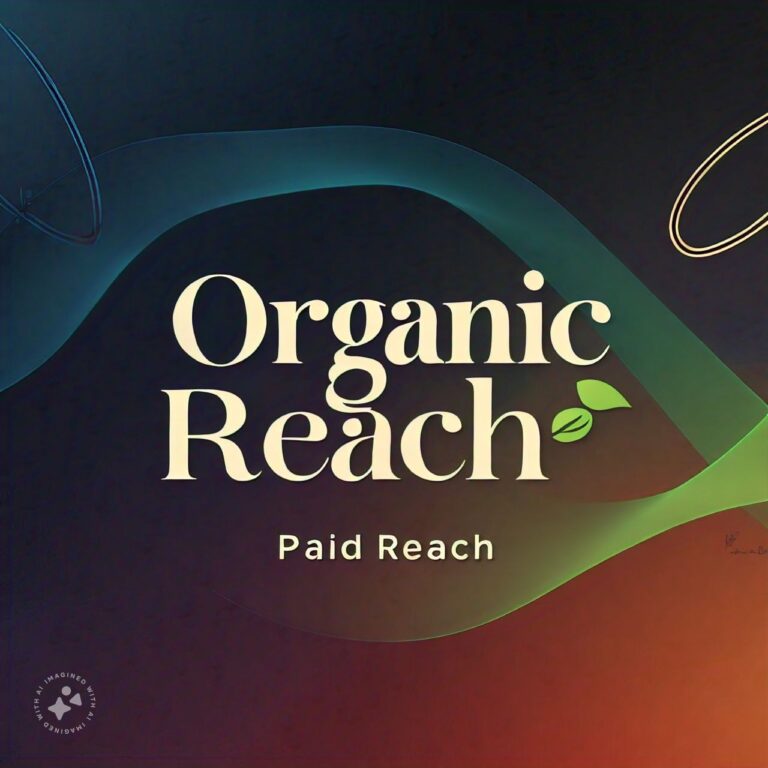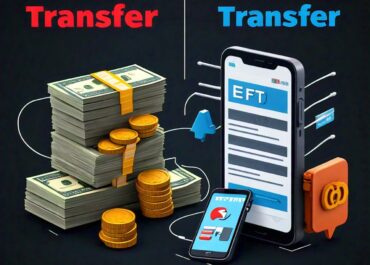
Differences Between Organic and Paid Reach on Social Media Platforms
In today’s digital landscape, social media platforms have become an essential tool for individuals, businesses, and brands to connect with their audience. Organic reach refers to the number of people who see your content without paid promotion. It’s the free reach you get when your followers or users engage with your posts, share them, or discover them through hashtags and searches. Organic reach has become more challenging to achieve as social media algorithms evolve to prioritize content from friends and family, and as platforms like Facebook, Instagram, and Twitter make room for paid advertising. However, organic reach remains a crucial element for building authentic relationships with audiences and establishing long-term credibility.
On the other hand, paid reach is the number of people who see your content as a result of paid promotion or advertising. When you pay to promote your posts or run ads on social media, the platform will push your content to a wider audience based on targeting options like demographics, interests, and behaviors. Paid reach provides an immediate way to reach more people and is especially beneficial for businesses looking to increase brand awareness, drive traffic, or boost sales quickly. While both organic and paid reach play significant roles in social media marketing, they serve different purposes and often complement each other in an overall strategy.
Organic Overview
Organic reach on social media refers to the number of users who see your content naturally, without paid promotions. Below are five key aspects of organic reach.
1. What is Organic Reach?
Organic reach is the number of people who come across your social media content through unpaid distribution. It occurs when your followers see your posts in their feeds or when users find your content through searches, hashtags, or recommendations. Organic reach is important because it reflects the natural interest your content generates without the need for monetary investment. Platforms like Facebook, Instagram, Twitter, and LinkedIn provide opportunities for organic reach, but their algorithms prioritize content that garners high engagement, which makes achieving significant organic reach more challenging.
- Natural Visibility: Content that is seen by users without paid promotion.
- Algorithm-Driven: Based on user engagement and interaction rather than monetary investment.
2. The Importance of Engagement in Organic Reach
Engagement plays a critical role in boosting organic reach. Social media platforms use algorithms to determine which content to show to users based on interactions such as likes, comments, shares, and saves. The more engaging your content, the higher the likelihood it will be shown to a larger audience. For example, a post on Instagram with high engagement may appear in the "Explore" section, potentially reaching users who don't follow your account. Therefore, creating engaging, high-quality content is essential for maximizing organic reach.
- High Engagement: Key to increasing organic visibility across social media platforms.
- Social Algorithms: Favor content with strong interaction from users.
3. Benefits of Organic Reach
The primary advantage of organic reach is its cost-effectiveness. You don’t have to spend money to reach your audience, making it an attractive option for businesses with limited marketing budgets. Additionally, organic reach allows for the development of authentic connections with followers. Content that resonates with users will naturally gain traction through likes, comments, and shares, helping to build a loyal and engaged community. Organic reach is also long-lasting, with the potential for content to continue spreading as more people engage with it over time.
- Cost-Effective: Requires no monetary investment, unlike paid promotions.
- Authentic Connections: Builds trust and credibility with a loyal audience.
4. Challenges of Organic Reach
Despite its benefits, organic reach faces several challenges. With platforms like Facebook and Instagram continuously updating their algorithms, organic reach has decreased significantly over the years. Social media companies often prioritize posts from personal connections over business or branded content, making it harder for companies to appear in their followers' feeds. Additionally, organic reach is limited to your existing followers, meaning that reaching new audiences can be difficult without paid promotion or viral content.
- Declining Reach: Algorithms often reduce the visibility of organic posts, especially for businesses.
- Limited Audience Growth: Harder to reach new users without paying for ads or creating viral content.
5. How to Improve Organic Reach
To enhance organic reach, businesses and individuals can employ several strategies:
- Post Consistently: Regular posting keeps your audience engaged and increases the likelihood of your content being seen.
- Optimize Timing: Post when your audience is most active to increase visibility and engagement.
- Use Hashtags: Hashtags can extend the reach of your posts to users searching for related content.
- Engage with Your Audience: Responding to comments, asking questions, and encouraging conversations can boost engagement and, in turn, organic reach.
- Consistency and Timing: Key factors in increasing organic visibility.
- Audience Engagement: Direct interaction with users improves reach.
Paid Reach on Social Media Platforms Overview
Paid reach refers to the number of people who see your social media content through paid promotions or advertisements. Below are five key aspects of paid reach.
1. What is Paid Reach?
Paid reach involves promoting content through advertising campaigns on social media platforms to reach a broader and more targeted audience. Social media platforms like Facebook, Instagram, Twitter, and LinkedIn offer businesses the option to run ads that appear in users' feeds or stories. These platforms allow for detailed targeting based on factors like age, location, interests, and behaviors, ensuring that your content reaches users who are most likely to engage with it. Paid reach helps businesses increase visibility, attract new followers, and drive conversions in a shorter amount of time compared to organic methods.
- Targeted Promotion: Reach specific audiences through paid advertisements.
- Increased Visibility: Content is pushed to a larger audience beyond your followers.
2. Types of Paid Social Media Ads
There are various types of paid ads that businesses can run on social media platforms, including:
- Boosted Posts: Organic posts that are promoted to a wider audience for increased visibility.
- Sponsored Ads: Custom ad campaigns designed to appear in users' feeds, stories, or sidebars.
- Carousel Ads: Ads that allow users to swipe through multiple images or videos within a single post.
- Video Ads: Engaging video content that can capture user attention more effectively than static images.
- Boosted Posts and Sponsored Ads: Popular options for increasing reach.
- Carousel and Video Ads: Offer more interactive and engaging ad formats.
3. Benefits of Paid Reach
The primary benefit of paid reach is its ability to deliver immediate and measurable results. Paid advertising on social media platforms allows businesses to quickly reach a large audience and track key metrics such as impressions, clicks, and conversions. Additionally, paid reach offers precise targeting options, enabling advertisers to reach users based on demographics, interests, and behaviors. Paid campaigns also provide more control over the timing and placement of content, ensuring that ads are seen when and where they are most effective.
- Immediate Results: Paid campaigns deliver faster outcomes compared to organic reach.
- Precise Targeting: Ability to tailor ads to specific demographics and interests.
4. Challenges of Paid Reach
While paid reach offers several advantages, it also comes with challenges. First and foremost, paid campaigns require a financial investment, and depending on the platform, advertising costs can add up quickly. Additionally, without proper targeting, ads may reach users who are unlikely to engage or convert, leading to wasted budget. Paid ads also have a limited lifespan; once the campaign ends, the visibility of the content diminishes unless it continues to perform well organically. Moreover, frequent reliance on paid reach can lead to over-saturation, where users may become desensitized to promoted content.
- Costly Campaigns: Paid reach requires ongoing financial investment.
- Short-Term Impact: Visibility decreases once the campaign ends unless supported by organic growth.
5. How to Optimize Paid Reach
To maximize the effectiveness of paid reach, businesses should focus on optimizing their campaigns through the following strategies:
- Targeting Precision: Use advanced targeting options to reach the right audience based on demographics, location, and interests.
- Ad Testing: Run A/B tests on different ad creatives to identify what resonates most with your audience.
- Budget Management: Allocate your budget wisely, ensuring that you are not overspending on underperforming ads.
- Monitor Metrics: Continuously track and analyze key performance indicators (KPIs) such as cost-per-click (CPC), conversion rates, and return on ad spend (ROAS).
- Targeting and Testing: Essential for maximizing the effectiveness of paid campaigns.
- Budget and Metrics: Careful budget management and performance tracking are crucial for success.
Differences Between Organic and Paid Reach on Social Media Platforms
- Cost
- Organic Reach: Free to achieve but requires effort in content creation and engagement.
- Paid Reach: Requires financial investment to boost visibility.
- Audience Growth
- Organic Reach: Limited to existing followers unless content goes viral.
- Paid Reach: Can target new and specific audiences immediately through ads.
- Speed of Results
- Organic Reach: Slower to build but fosters long-term relationships.
- Paid Reach: Delivers quick, short-term visibility and engagement.
- Longevity
- Organic Reach: Content can continue to spread as users engage with it over time.
- Paid Reach: Visibility ends when the ad budget runs out unless supported organically.
- Engagement Type
- Organic Reach: Encourages more authentic interactions and community building.
- Paid Reach: Interaction can feel more transactional and ad-driven.
- Content Type
- Organic Reach: Relies on engaging, relevant, and timely content.
- Paid Reach: Focuses on promotional content designed to convert or drive traffic.
- Algorithm Dependence
- Organic Reach: Subject to platform algorithms that prioritize content with high engagement.
- Paid Reach: Less reliant on algorithms, as paid content is pushed directly to the audience.
- Control Over Audience
- Organic Reach: Limited control over who sees the content, relying on platform algorithms.
- Paid Reach: Advertisers can precisely control the audience based on targeting options.
- Reach Potential
- Organic Reach: Limited unless content becomes viral.
- Paid Reach: Potential to reach a much larger and broader audience.
- Performance Tracking
- Organic Reach: Harder to measure in real-time, though engagement metrics like likes and comments are visible.
- Paid Reach: Provides detailed metrics on impressions, clicks, conversions, and other KPIs.
Conclusion
Both organic and paid reach play critical roles in a successful social media strategy. Organic reach allows businesses and individuals to build authentic connections with their followers over time, fostering community and trust without spending money. It is a long-term investment in building a brand’s reputation and credibility. However, the challenges of declining visibility due to changing algorithms make organic reach harder to achieve without high engagement.
Paid reach, on the other hand, offers a fast and effective way to increase visibility, attract new followers, and achieve specific marketing goals. It is ideal for businesses looking to grow quickly, run promotions, or target new audiences. While it requires financial investment and careful management to ensure a good return on investment, paid reach can complement organic strategies to create a balanced, comprehensive approach to social media marketing. By understanding the strengths and weaknesses of each, businesses and individuals can effectively use both organic and paid reach to maximize their impact on social media platforms.
FAQs
Related Topics
- All
- Animals
- Diseases
- Health
- Money
- Politics
© 2024 OnYelp.com. All rights reserved. Terms and Conditions | Contact Us | About us





